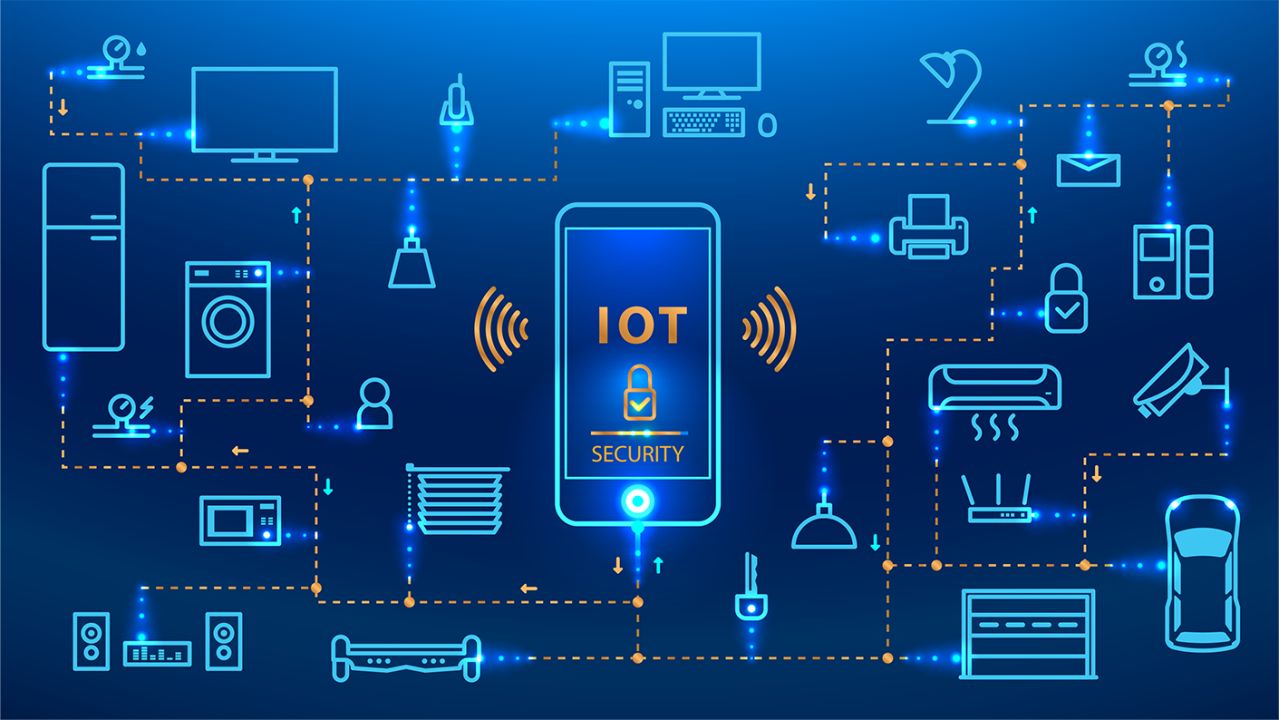The Internet of Things (IoT) has transformed our lives and workplaces by creating a networked ecosystem that allows a range of devices that range from refrigerators to smart industrial machinery and thermostats, can seamlessly interact. Although interconnectivity offers exceptional functionality and convenience but it also presents significant security dangers.
The emergence of more interconnected devices increases the threat to cybercriminals, increasing the risk of data breaches and security theft. The main concern right now isn’t whether the threat will be present and how businesses and individuals can mitigate the risk in a constantly evolving technological landscape.
Table of Contents
The Growth of IoT and Its Security Implications
The Internet of Things (IoT) is growing rapidly. A study by Statista states that the number of connected IoT devices will exceed 30 billion in 2025. They generate huge amounts of data that allow businesses to gain valuable information about their operations, improve efficiency, and deliver customised services to their clients. But, this increase in IoT devices can also pose possible security threats.
Many Internet of Things (IoT) devices value convenience and performance over security concerns. Most of the time, these devices have poor default passwords, insufficient security measures to protect against hackers, and limited abilities for software updates. Once online, they are susceptible to cyber-attacks. In particular, an infected IoT device can be used to launch Distributed Denial of Service (DDoS) attacks, obtain sensitive data, or be able to control vital infrastructure.
The Challenges of Securing IoT Devices
Security of IoT devices poses a number of challenges due to the sheer size and variety of the devices. Contrary to traditional IT systems, which can be centrally managed and maintained, IoT devices are frequently scattered across different locations, including manufacturing facilities, residential areas, as well as healthcare facilities and urban settings. This makes it difficult to application of uniform security measures across all devices.
Resource Limitations: A variety of Internet of Things (IoT) devices are distinguished by their low cost and energy consumption, paired with limitations on processing power. Therefore, they aren’t able to implement traditional security protocols, like secure encryption or robust surveillance systems. For instance, the smart lightbulb might not have the resources needed to run antivirus programs or conduct regular security checks.
A lack of standardization. Lack of Standardization: The Internet of Things (IoT) ecosystem is highly fragmented and is characterised by a myriad of vendors using different operating systems, communication protocols, along security standards. This lack of standardization impedes the deployment of robust security measures across all of the IoT environment. Additionally, a lot of devices are not receiving sufficient or inconsistent security updates, making vulnerable to known vulnerabilities.
Insecure Communication Channels IoT devices typically rely upon wireless communications protocols like Wi-Fi Bluetooth and Zigbee which are vulnerable to eavesdropping or man-in the-middle attacks if proper security measures aren’t implemented. If encryption is not implemented or authentication that is appropriate, devices are susceptible to being hacked or manipulated in order to facilitate other attacks.
Long Lifecycles: A variety of IoT devices are designed for long-term durability. They are usually designed to last for a long time. But, as time passes the software running installed on these devices could become outdated, leading to the development of security flaws. Manufacturers may not offer upgrades or patching for their older devices, leaving them vulnerable to modern threats. This could be particularly worrying in critical sectors like healthcare in which the use of old IoT devices could pose serious risk to the security of patients.
Emerging IoT Cybersecurity Threats
As the popularity of IoT technology continues to grow the cybercriminals are increasing their efforts on devices that are connected. Many IoT-related threats have surfaced, such as:
Botnets, and DDoS Attacks in 2016: The Mirai botnet gained a lot of notice through the use of thousands of unsecure Internet of Things (IoT) devices, including cameras as well as routers, to carry out one of the largest Distributed Denial of Service (DDoS) attacks ever recorded. The attack caused temporary suspension of the important websites, including Twitter, Netflix, and Spotify. The vulnerability inherent to IoT devices to be entangled into botnets is a result of their lack of security measures, making them vulnerable to attack.
Data Breach: IoT devices frequently gather sensitive personal information such as health records, geographic settings, and other usage patterns. If there is an attack, cybercriminals might use the data to pursue reasons such as the theft of identities, exortion or even fraudulent actions. For example, a hacking smart thermostat may reveal the daily routine of a homeowner and increase the risk of a physical crime.
Ransomware: Ransomware attacks have historically been associated with conventional computer systems, but there is a rising pattern towards IoT gadgets being targeted with these attacks. Hackers can take the control on any IoT device, thereby limiting its capabilities, and then demand a ransom in exchange for its recovery. This is especially harmful if the device has essential roles in a company’s operation for example, an medical device as well as an industrial controller.
Manipulation of Critical Systems IoT devices are integrated into critical infrastructures, such as water purification facilities and transportation systems. If hackers were to take control of these devices, it may result in operational disruptions and physical injury or even an imminent threat to the safety of humans. In the event of Stuxnet incident, specifically focused on Iran’s nuclear installations provides a compelling example of the ways in which IoT devices could be used to disrupt industrial processes.
Best Practices for Securing IoT Devices
It is crucial to implement proactive security strategies to protect against the inherent risks associated with security risks associated with the Internet of Things (IoT). Both users and enterprises are responsible to protect IoT devices to minimize the risk of cyberattacks.
Conclusion
In the meantime, as the Internet of Things (IoT) continues to expand and change the way we work It is crucial to focus on cybersecurity in the development, implementation and monitoring of IoT devices. The interconnected nature of IoT devices mean that even a single device breach could have a significant impact on the system.
By adopting best practices, staying vigilant to emerging threats, and using complete security protocols, individuals and organizations can minimize risks and make the most of potentials created with IoT. IoT revolution. In today’s rapidly evolving digital world, being proactive in tackling risks is not just an option, it is vital to ensure an unsecure future.





